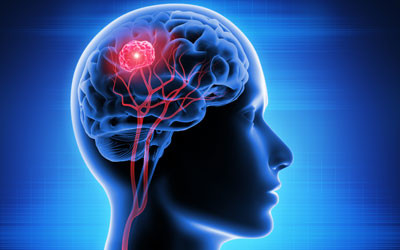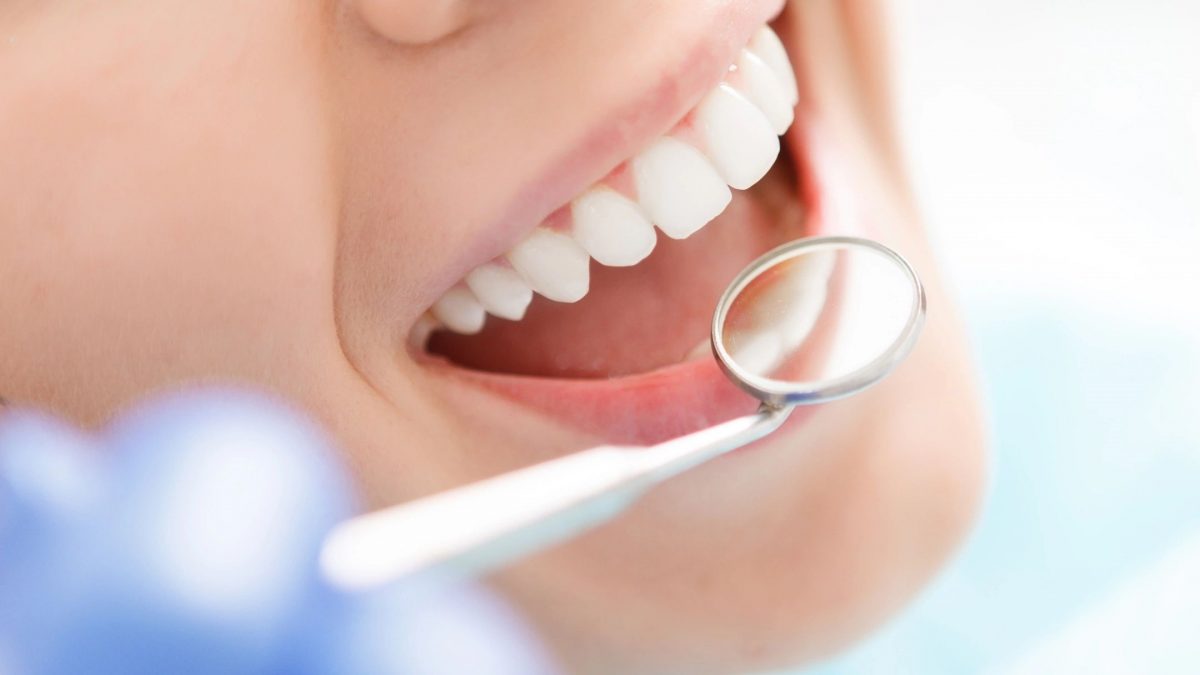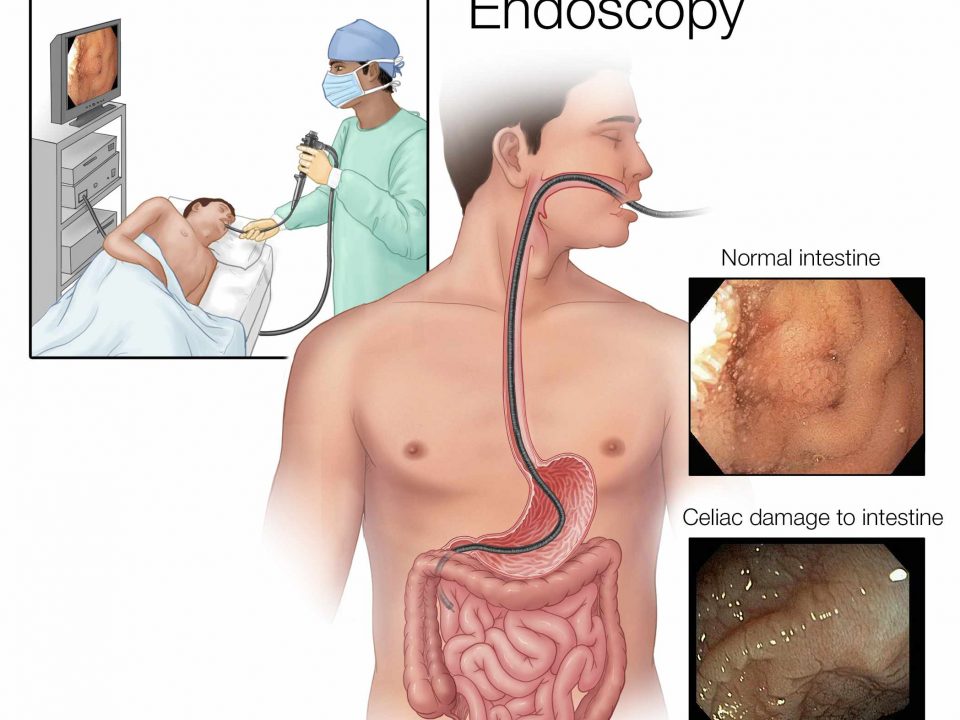Drug treatment for brain tumours
August 26, 2019FDA Approved Drugs for Orthopedic Surgery
August 26, 2019
- 1. Drugs used in dentistry
- 2. % of various drugs used in dentistry• 32 .6% antibiotics• 23.2% NSAIDS• 3.6 % vitamins• Others-antiseptics like chx,listerine
- 3. Drugs used in dentistryDrugs used in dentistry• Drugs used in emergencies• Drugs used in outpatient basis
- 4. The current recommended drugs for medicalemergencies are:• Adrenaline , 1-ml ampoules of 1:1000 solution forintramuscular (i.m.) injection• Glucagon, for i.m. injection of 1 mg• Glyceryl trinitrate (GTN)• Oral glucose /dextrose
- 5. • Oxygen• Salbutamol inhaler, 100 µg per actuation• Chlorphenamine• Parenteral midazolam /diazepam• Aspirin, 300-mg dispersible tablets• Morphine• Ammonia tabs
- 6. AnaphylaxisAnaphylaxis
- 7. Managementin severe casesCall for an ambulance.Secure the patient’s airway and help to restore their bloodpressure by laying the patient flat and raising their feet.Administer adrenaline, 0.5 ml (1:1000), i.m. injection repeatedafter 5 minutes if neededAdminister 100% oxygen – flow rate:10 litres/minute.Call for an ambulance.Secure the patient’s airway and help to restore their bloodpressure by laying the patient flat and raising their feet.Administer adrenaline, 0.5 ml (1:1000), i.m. injection repeatedafter 5 minutes if neededAdminister 100% oxygen – flow rate:10 litres/minute.
- 8. For milder forms of allergy:Administer 1 chlorphenamine tablet,4 mg.(cadistin)For children:Chlorphenamine Tablet, 4 mg or Oral Solution, 2 mg/5 mlChlorphenamine can cause drowsiness. Advise patients not to drive.For milder forms of allergy:Administer 1 chlorphenamine tablet,4 mg.(cadistin)For children:Chlorphenamine Tablet, 4 mg or Oral Solution, 2 mg/5 mlChlorphenamine can cause drowsiness. Advise patients not to drive.
- 9. Asthma
- 10. • Salbutamol 4 puffs (if patients own puffavailable)• Salbutamol 5 mg +ipratropium bromide5OOumg nebulised• Oxygen 10 l/min• Hydrocortisone 100 mg iv• Ventilation if needed
- 11. AnginaSigns and symptoms include:• Chest pain• Shortness of breath• Fast and slow heart rates• Increased respiratory rate• Low blood pressure• Poor peripheral perfusionmanagement• Administer glyceryltrinitrate (GTN) dispersibletab• Administer 100% oxygen –flow rate 10 litres/minute.• If the patient suffers more-severe attacks of chestpain or if there are suddenalterations in the patient’sheart rate, call for anambulance.
- 12. Cardiac ArrestSigns and symptoms include:• Loss of consciousness• Loss of pulse and bloodpressure• Absence of breathingmanagement• Call for an ambulance.• Adrenaline 1 mg and repeatedafter 3 – 5 mins• 2 nd dose of adr +atropine 1 mgiv+• Initiate CPR, using 100% oxygenfor ventilation – flow rate: 10litres/minute.
- 13. Myocardial InfarctionSigns and symptoms include:• Progressive onset of severe,crushing pain in the centre andacross the front of chest; the painmight radiate to the shouldersand down the arms (morecommonly the left), into the neckand jaw or through to the back• Skin becomes pale and clammy• Nausea and vomiting are common• Pulse might be weak and bloodpressure might fall• Shortness of breath• Call for an ambulance and allow thepatient to rest in a comfortableposition.• Administer 100% oxygen – flowrate:10 litres/minute.• Administer GTN 1 tab sublingually• Administer aspirin, 300-mgdispersible tablet, orally.• Morphine 5 mg imFor children:• Do not use in children because,rarely, it can cause Reye’ssyndrome
- 14. EpilepsySigns and symptoms include:• Brief warning or ‘aura’• Sudden loss of consciousness, thepatient becomes rigid, falls,might give a cry and becomescyanosed (tonic phase)• After a few seconds, there arejerking movements of the limbs;the tongue might be bitten(clonic phase)• There might be frothing from themouth and urinary incontinence• The seizure typically lasts a fewminutes; the patient might thenbecome floppy but remainunconscious• After a variable time the patientregains consciousness but mightremain confusedManagement• Do not try to restrainconvulsive movements.• Ensure the patient is not atrisk from injury.• Administer 100% O2– flowrate10 litres/minute.• If the epileptic fit is repeatedor prolonged (5 minutes orlonger), continueadministering oxygen and:• Administ er diazepam 10 mgim
- 15. FaintSigns and symptoms include:• Patient feels faint, dizzy,light-headed• Slow pulse rate• Low blood pressure• Pallor and sweating• Nausea and vomiting• Loss of consciousnessManagement• Lay the patient flat and, ifthe patient is notbreathless, raise thepatient’s feet. Loosen anytight clothing around theneck.• Administer 100% oxygen –flow rate:10 litres/minuteuntil consciousness isregained.• Ammonia tabs crushed andsniffed to the patients
- 16. 10–15 mins•If the patient is unconsciousadminister glucagon, 1 mg, i.m. injectionFor children:•Glucagon, i.m. injection•2–18 year body-weight <25 kg ……..0.5 mg•2–18 years body-weight >25 kg……..1 mg•administer oral glucose (10–20 g) when the patientregains consciousness•If the patient does not respond or any difficulty isexperienced, call for an ambulance.
- 17. anxietyappropriate regimen to produce mild sedation to aidanxiety management is:• Diazepam Tablets, 5 mg, 1 tablet on night beforeprocedure and 1 tablet 2 hours before procedure• Advise all patients that they should not to drive.
- 18. Antiboiticsand infections• Localized Infection, Non-allergy Patients:penicillin and amoxicillin continue to be the first drugsof choice due to their safety and effectiveness againstoral infections. ions. The usual dosage is 500mg tid. .• for the localized, non-allergy patient, the drug ofchoice is amoxicillin 500 mg tid If the patient does notimprove after 3 days then consider “piggy-backing” theremainder of the amoxicillin withmetronidazole400mg, bid. The metronidazole iseffective against resistant anaerobic bacteria andworks well when taken with amoxicillin.
- 19. • Spreading Infection, Non-allergy Patients: the first drug ofchoice isAugmentin/clavumAmpicillin +cloxacillin(megapain)• Spreading Infection, Allergy to Penicillin Patients: the drugsof choice are (clarithromycin) and(azithromycin) which are secondgeneration erythromycin drugs and are effective against oralpathogens and are also broad spectrum like Augmentin. The bestchoice in this category is azithromycin• Clindamycin can also be used
- 20. DENTAL PROCEDURES CONSIDERED FOR ANTIBIOTICPROPHYLAXIS IN SUSCEPTIBLE PATIENTSHigh risk category• Dental extractions• Periodontal procedures including surgery,scaling, rootplaning and probing• Dental implant placement, reimplantationof teeth• Endodontic instrumentation or surgerybeyond the tooth apex• Subgingival placement of antibiotic fibersor strips• Initial placement of orthodontic bands butnot brackets• Intraligamentary local anestheticinjections• Prophylactic cleaning of teeth orimplants with andanticipatedbleedingPROCEDURES NOT RECOMMENDED FOR PROPHYLAXIS• Restorative dental procedures withor withoutretraction cord• Local anesthetic injections (except forintraligamentary)• Intracanal endodontic procedures,• post placement andbuildup• Placement of rubber dams• Postoperative suture removal• Placement of removable orthodonticor prosthodonticappliances• Taking oral impressions• Fluoride treatments• Taking oral radiographs• Orthodontic appliance adjustment• Shedding of primary teeth
- 21. Cardiac conditions for prophylaxisHigh risk• Prosthetic cardiac valves• Previousbacterialendocarditis• Complex,cyanoticcongenitalheart disease• Surgicallyconstructedsystemicpulmonary shuntsModerate risk• Most other congenital cardiacmalformations not otherwiseindicated• Acquired valvulardysfunction• Hypertrophiccardiomyopathy• Mitralvalveprolapsewithregurgitation and/or thickened valveleaflets
- 22. ProphylaxisStandardProphylaxisAmoxicillinAdults, 2.0 grams;Children50milligrams/kilogramorally one hourbeforeprocedureCannot UseOralMedicationsAmpicillinAdults, 2.0 gIMor IVchildren, 50mg/kgIMorIV within 30minutesbeforeprocedureClindamycinAdults, 600 mg;children,20 mg/kg orally onehourbefore procedureCephalexinAdults, 2.0 g;children,50 mg/kg orally onehourbefore procedureAzi/clarithromycinAdults, 500 mg;children,15 mg/kg orally onehourbefore procedureAllergic to PenicillinClindamycinAdults, 600 mg;children,15 mg/kg IV onehourbeforeprocedureCefazolinAdults, 1.0 g;children,25 mg/kg IM orIV within30 minutesbeforeAllergic toPenicillin andUnableto Take OralMedications
- 23. Dentoalveolar abscessManagementLocal Measures – to be usedin the first instance• If pus is present in dentalabscesses, drain byextraction of the tooth orthrough the root canals.• If pus is present in any softtissue, attempt to drain byincision.Antiboitics usedIf drug treatment is required, anappropriate 5-day regimen is achoice of:Amoxicillin Capsules, 500 mg tdsX 5 daysAmoxiclavMegapain
- 24. • Metronidazole Tablets,400 mg tds X 5 daysFor children:• Metronidazole Tablets,200 mg, orOralSuspension, 200 mg/5ml• advise patient toavoid alcohol(metronidazole has adisulfiram-likereaction withalcohol).• The anticoagulanteffect of warfarinmight be enhancedby metronidazole.
- 25. • Erythromycin is analternative to thepenicillins:Erythromycin(erythrocin) Tablets, 500mgbd X5 days• Also clindamycin(clincin)300 mg tidFor children:• Erythromycin Tablets, 250mg, or• Oral Suspension, 125 mg/5mldaily• Clindamycin is notrecommended for the routinetreatment of oral infectionsbecause it is no moreeffective against anaerobesthan the penicillins and cancause the serious adverseeffect of antibiotic-associatedcolitis more frequently thanother antibiotics.• The empirical use ofantibiotics, such asclindamycin, cephalosporins,co-amoxiclav or other broad-spectrum antibiotics, overamoxicillin, metronidazole anderythromycin for most dentalpatients can also be done
- 26. Odontogenic and space infectionsThe primary treatment of odontogenicinfections has been surgicalAntibiotics are a necessary adjunctive therapyin many infections to hasten completethe antibiotic must be effective againstStreptococcus and anaerobes
- 27. • A. Very effective• 1. Peniccilin– Tab clavum /augmentin– megapain• 2. Clindamycin• 3. Metronidazole (alone orin combination withpenicillin)• B. Effective• 1.Erythromycin/azithromyn• 2. cefexime• Parenreral– Clavum iv od– Cefazolin iv bd– Ceftriaxone iv bd +– Metronidazole iv tid
- 28. • In the penicillin-allergicpatient, clindamycin isthe second drug ofchoice. In the penicillin-allergic patient,clindamycin is thesecond drug of choice.• The first-generation cephalosporinshave the same effect on themicrobial population causingodontogenic infections thatpenicillindoes.• The second-generation drug cefoxitinis more active against the anaerobicbacteria but loses some of the anti-streptococcal activity of the first-generation drugs.• The third-generationcephalosporinsare generally effective againstanaerobes but also have increasedeffectivenessagainst streptococci• Thus the second- and third-generation drugs are not highlydesirable
- 29. ANUGmanagementlocal Measures – to be used inthe first instancein anug undidemeer LA-dodebridement3 % h2o2 mouthwash 2 hourlyfor 5 -7 days then switch toChx mouthwash 0.2% bd for 15daysMedications• If drug treatment is required, anappropriate 3-day regimen is:• Metronidazole Tablets, 400mg tid• For children:• MetronidazoleTab 400mg, orOral Suspension, 200 mg/5 mlOr• Amoxicillin Capsules, 500mg, orOral Suspension 125 mg/5 ml• Have a day gap re schedule for thetreatment outcome
- 30. Sinusitis• Local Measures – tobe used in the firstinstance• Advise the patient touse steaminhalation. Do notrecommend the useof boiling water forsteam inhalation inchildren.• If drug treatment is required, anappropriate regimen is:• Ephedrine Nasal Drops, 0.5 % 1 drop intoeach nostril up to three times daily whenrequiredAdvise patient to use for a maximum of 7days. In adults and children, the dose ofephedrine nasal drops can be increased to2 drops 3 or 4 times daily, if required.If an antibiotic is required, an appropriate 7-day regimen is a choice of:Amoxicillin Capsules, 500mg tdsDoxycycline Capsules, 100 mg. 2 capsules onthe first day, followed by 1 capsule daily
- 31. Pseudomembranous candidiasisLocal Measures – to be used in thefirst instance• Advise patients who use acorticosteroid inhaler to rinse theirmouth with water or brush theirteeth immediately after using theinhaler.• If drug treatment is required, anappropriate 7-day regimen is a choiceof:• Fluconazole Capsules, 50mg(fluzone)• lf fluconazole and miconazole arecontraindicated, an appropriateregimen is a choice of:• Amphotericin b 10mg (fungisome).1 lozenge dissolved slowly in themouth after food four times dailyfor 10 daysAdvise patient to continue use for 48hours after lesions have healed.• Nystatin Oral Suspension,100,000units/ml. 1 ml after food four timesdaily for 7 days
- 32. Denture StomatitisAdvise the patient to:• clean their dentures thoroughly (bysoaking in chlorhexidine mouthwash orsodium hypochlorite for 15 minutestwice daily; note that hypochloriteshould only be used for acrylic dentures)and brush their palate daily to treatthe condition;• leave their dentures out as often aspossible during the treatment period;• not wear their dentures at nightIf dentures themselves are identified ascontributing to the problem, ensurethe dentures are adjusted or newdentures are made to avoid the problemrecurring.• If drug treatment isrequired, an appropriate7-day regimen is a choiceof:• Fluconazole Capsules,150 mg per weekly• Miconazole OromucosalGel24 mg/ml (daktarin)If fluconazole andmiconazoleare contraindicated, anappropriate regimen is achoice :AmphotericinLozenges, 10 mg• Nystatin Oral Suspension,100,000 units/ml
- 33. Angular cheilitis• Miconazole Cream, 2%Advise patient to continueuse for 10 days after lesionshave healed.Nystatin Ointment(mycostatin)(100,000 units per g) Apply toangles of mouth four timesdailySodium Fusidate Ointment,2% qid X 10 days• An appropriate regimen forunresponsive cases is achoice of:Hydrocortisone (1%) andMiconazole (2%) Cream bidX 7 days
- 34. Herpetic gingivostomatitisAciclovir Tablets, 400 mg X 5 times/day XFor children:Aciclovir Tablets, 200 mg, orOral Suspension 200 mg/5 ml.Aciclovir Cream, 5% Apply tolesion every 4 hours for 5 daysAciclovir cream can be appliedfor up to 10 days, if requiredPenciclovir Cream, 1%Apply to lesions every 2 hoursduring waking for 4 days
- 35. Varicella-zoster Infections• In patients with herpeszoster (shingles), systemicantiviral agents reduce pain,and reduce the incidence ofpost-herpetic neuralgia andviral shedding• Aciclovir is the drug ofchoice. However, valaciclovirand famciclovir are suitablealternatives• Aciclovir Tab 800 mg X5/dayX7 days.
- 36. Odontogenic pain• For mild to moderateodontogenic or post-operative pain, anappropriate 5-dayregimen is:Paracetamol Tablets,500 mg X4/day daily• For children:Oral Suspension 120mg/5 ml or 250 mg/5ml• For mild to moderateodontogenic, post-operative orinflammatory pain, anappropriate 5-day regimen is:Ibuprofen Tablets, 400 mg x4 /day• For children:• Ibuprofen Oral Suspension,100mg/5 ml
- 37. • For mild tomoderateodontogenic orinflammatory pain,an appropriate 5-dayregimen is:ipobrufin+pcm(flexon)• Or ketorolac 10 mgtid• For moderate to severeinflammatory or post-operative pain, anappropriate 5-dayregimen is:• Codep(codine +pcm) tid• Diclofenac Tablets, 75mg three times daily• Tramadol 50 mg tid
- 38. Trigeminal neuralgia• If a patient withtrigeminal neuralgiapresents in primarycare, control quicklyby treatment withcarbamazepine(tegretal)• CarbamazepineTablets, 200 mg bdx10 days(tegretal) canbe increased to 600mg bd• Baclofen 5 mg tid for 3days and increased up to10 mg tid for 3 days• Phenytoin 300 -600 mgbd• Gabapentin andoxycarbamazepine canalso be prescribed• LA injections at painsites
- 39. MPDSPharmacotherapy•Ibuprofen400mgtd+diazepam10 mg bd•Naproxen 500 mg bd orcelecoxib 100 mg bd•Amytryptaline 10 mg od(triad)•Chlorzoxazone 500 mgtid(lorzone)• tizanidine 2 mg tds•Chymoral forte qid•Pepsa 10 mg tid x 5 days50 % of patients get relieved by thistreatmentPsychological counsellingTrigger point injections0.5 -1 ml of LA injectioncovering the conical areaaround the trigger zone(0.5 mlof procaine or 1 ml oflignocaine)Botulism toxin patch or injection(botox)Capsaicin patch0.025%-0.075% usedIt it’s a substance p depleter sothere is decreased nervesensitisationUsed 4 times a day for atleast 2weeks
- 40. Oral ulcersCauses of mouth ulcers.● Local causes:– trauma– burns● Drugs● Recurrent aphthous stomatitis● Malignant ulcers● Systemic disease:–blood disorders– gastrointestinal disorders–mucocutaneous disease– connective tissue disease– vasculitides–infective diseases● Others• Lichen planus• Kenakort topical• Tacrolimus 0.003%topical• Careage –multivitamin• lycostar-antioxidant• If large lichen ulcer …prescribe 20 mg tds x5 days later taperedto 20 mg bd and then10 mg bd and 5 mgbd and 5 mg od x 5days prednisolone
- 41. Mouth ulcerations-overall management• Local Measures – to be used inthe first instance• Antimicrobial MouthwashesChlorhexidine Mouthwash, 0.2%1 minute with10 ml twice daily• Hydrogen Peroxide Mouthwash,6% Rinse mouth for 2 minuteswith 15 ml diluted in half a glassof warm water three times daily• Tetracycline mouthwash (nowusing doxycycline) is effectivein some patients withrecurrent aphthous stomatitis.Local Analgesics• Lidocaine 5% ointment can beapplied to the ulcerBenzydamine Mouthwash, 0.15% 2hourly as requiredAdvise patient that benzydaminemouthwash can be diluted with anequal volume of water if stingingoccurs.• Advise patient to spit outmouthwash after rinsing.• The mouthwash is usually given fornot more than 7 days.
- 42. • Betamethasone SolubleTab,500 umg 1 tabletdissolved in 20 ml water as aTriamcinolone ointment_ Apply athin layer to dried mucosa fourtimes dailySystemic corticosteroids in casesof immune mediatedmucocutaneous ulcerations
- 43. Management of traumatic ulcers•Remove aetiological factors andprescribe a chlorhexidine 0.2%mouthwash.•Maintenance of good oral hygiene andthe use of benzydamine (absorb)(tantum)or hot saline mouthbaths mayhelp•Most ulcers of local cause healspontaneously in about 1 week if thecause is removed and suchsupportive caregiven.
- 44. Aphthous ulcersInformation to be given to the patients• These are common• The cause is not known• Children may inherit ulcers fromparents• Aphthous ulcers are not thought tobe infectious• Some deficiencies or diseases maypredispose toulcers• No long-term consequences areknown• Blood tests and biopsy may berequired• Ulcers can be controlled but rarelycuredManagement of aphthae• Any underlying predisposing factorsshould betreated where possible, andthe aphthaecontrolled with:• chlorhexidine 0.2% aqueousmouthwash, or• topical corticosteroids such ashydrocortisonehemisuccinate 2.5 mgpellets, or• 0.1% triamcinolone acetonide inOrabase usedfour times daily or• 0.3% tricaine gel oe kenacort• in adults, tetracycline rinses 4 -5 /day
- 45. Dry mouthTreat systemic or localdisease if presentLocal Measures – to beused in the first instance• Advise the patient totake frequent sips ofwater• Prilocarpine (salagen) 5mg tid• Saliva-stimulating Tablets(SSTs)Eg .prescription ofsst like neutrasal andcaphosol
- 46. OSMF• Removal of habits is the most importantfactor• Treatment is usually done with• Hyaluronidase mixed with hydrocortisone andlignocaine and injected intralesionally• Vit A and B and E tabs(careage)• Lycostar-antioxidant(vit A ,C ,E, zinc ,selinium,lycopene)
- 47. Drugs to be avoided in pregnancy• Aminoglycosides• Tetracyclines• floroquinolones
- 48. References• Textbook of pharmacolgy:K D .Tripathi• Emergencies in dental office:Malamed• Textbook of oral medicine:Burkit• CIMS-drugs and dosage• Journal of drugs used in dentistry:scottish
Medicine types used in dental surgery:
- Antimicrobial agents:
- Antibiotics
- Antivirals
- Antifungals
- Painkillers
- Oral brushes
- Muscle relaxants
- ANTIBIOTICS
- Application forms:
- Antibiotic prophylaxis:
- It aims to prevent the infections
- Targeted therapy:
- Against cultured and described pathogen (antibiogramm)
- Empiric therapy:
- Begin antibiotic therapy because the clinical symptoms and the supporting laboratory tests confirms the infection
- Antibiotic efficiency:
- Be effective against the pathogens
- Necesarry concentration needed at the infected area
- Spectrum effect:
- The antibiotics have different antimicrobial spectrums:
- Narrow spectrum:
- It effects one or two pathogen gruops (targeted therapy)
- Wide spectrum:
- It effect more pathogen groups (empiric therapy)
- The original spectrum effect of the antibiotics could narrows by developing antibiotic resistance!!
- Treatment time:
- Treatment of an acute infection is usually 7-10 days. Managing a chronic infection may be longer time , for example Osteomyelitis (3-6 months)
-
- Side effects:
- Allergy
- Gastrointerstinal effects
- kidney-, liver- and hematopoietic toxicity
-
- Pregnancy :
- Beacuse of the potential toxicity several antibiotics should not be given
-
- Input options:
- per os
- intravenous
- Antibiotics used in dental surgery I.
- Penicillin combined β lactamase inhibitor (Augmentin Duo 1g, Aktil Duo 1g)
-
- Penicillin derivatives with widened spectrum (against G+,G- aeorob and anaerob bacteria) combined β lactamase inhibitor
- (amoxicillin + clavulanate)
- Dosage :
- Therapeutic dose : 2 X 1g / day
- Prophylaxis : 2 X 1g 1 hour before the treatment
- General indications :
- First line antibiotics in case of streptococcus, staphylococcus, enterococcus infection
- Side effects:
- Allergy, GI effects, morbillifrom rash, epilepsy
- Clindamycin (Dalacin 150mg, Dalacin C 300mg, Klimicin 300mg)
-
- Semisynthetic lincosamid with widened spectrum ( againts G+ aerob, G+G- anaerob bact.)
- Reaches therapeutic levels in biological fluids and tissues, so capable for abscesses treatment
- First choice in case of penicillin allergy
- Dosage :
- Therapeutic dose : 4 X 300mg / day
- Prophylaxis: 2 X 300mg 1 hour before the treatment
- General indications :
- Odontogenic infections, G+ bact., polymicrobial abdominal infections
- Side effects :
- Pseudomembranosus colitis, morbilliform rash, erythema multiforme, neutropenia, agranulocytosis
- In case of pregnancy it is not recommonded in the first trimester (FDA category: B)
- Metronidazol (Klion 250mg)
-
- Against G-,G+ anaerobs, G+ aerobs antibiotics, mostly in combination
-
- Dosage :
- Therapeutic dose : 2 X 250mg / day
- General indications :
- Clostridium difficile, combinations with another ABs in mixed infections
- Side effects:
- Dizziness, GI effects, alcohol intolerance,
- Forbidden in case of pregnancy in the first trimester!
- Ciprofloxacin (Ciprofloxacin 500mg, Ciprobay 500mg)
-
- generation wide fluoroquinolone, primarily against G- bacteria
-




